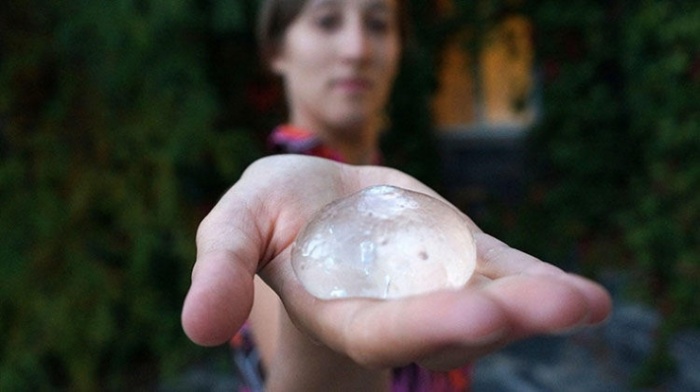Water bottles add to the bulk of trash that’s already overflowing in most landfills. Thing is, people still need their hydration on the go and some just can’t be bothered with water jugs. The alternative? These edible blobs filled with water created up by three London-based industrial design students Rodrigo García González, Pierre Paslier, and Guillaume Couche.
It’s called the Ooho and it’s a membrane made up of a compound formed from brown algae and calcium chloride. The gel-like substance is able to hold water and eliminates the need for non-biodegradable containers because, as mentioned earlier, it’s edible.
Gonzalez explains: “We’re applying an evolved version of spherification to one of the most basic and essential elements of life–water. The double membrane protects the inside hygienically, and makes it possible to put labels between the two layers without any adhesive. The reality is that more and more, when we drink water we throw away a plastic bottle. Eighty percent of them are not recycled. This consumerism reflects the society in which we live.”
Rethink the bottle, eliminate pollution. Of course, the Ooho is not without its problems. For example, there’s the matter of keeping it clean while it’s being stored and drinking from it without a bit of spillage. Still, it’s a worthwhile concept and a neat alternative to the conventional bottle.
VIA [ Dvice ]
The post Thirsty? Eat This: Ooho Water Blobs appeared first on OhGizmo!.









